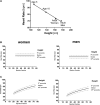Personalized accelerated physiologic pacing
- PMID: 37970518
- PMCID: PMC10637836
- DOI: 10.1093/eurheartjsupp/suad117
Personalized accelerated physiologic pacing
Abstract
Heart failure with preserved ejection fraction (HFpEF) is increasingly prevalent with a high socioeconomic burden. Pharmacological heart rate lowering was recommended to improve ventricular filling in HFpEF. This article discusses the misperceptions that have resulted in an overprescription of beta-blockers, which in all likelihood have untoward effects on patients with HFpEF, even if they have atrial fibrillation or coronary artery disease as a comorbidity. Directly contradicting the lower heart rate paradigm, faster heart rates provide haemodynamic and structural benefits, amongst which lower cardiac filling pressures and improved ventricular capacitance may be most important. Safe delivery of this therapeutic approach is feasible with atrial and ventricular conduction system pacing that aims to emulate or enhance cardiac excitation to maximize the haemodynamic benefits of accelerated pacing. This conceptual framework was first tested in the myPACE randomized controlled trial of patients with pre-existing pacemakers and preclinical or overt HFpEF. This article provides the background and path towards this treatment approach.
Keywords: Cardiac filling pressures; Cardiac remodelling; Conduction system pacing; Diastolic function; Ejection fraction; Heart failure; Heart rate.
© The Author(s) 2023. Published by Oxford University Press on behalf of the European Society of Cardiology.
Conflict of interest statement
Conflict of interest: M.M. and the University of Vermont have licensed patents for the use of pacemakers for the prevention and treatment of heart failure with preserved ejection fraction.
Figures





References
-
- Rohde E. Über den Einfluß der mechanischen Bedingungen auf die Tätigkeit und den Sauerstoffverbrauch des Warmblüterherzens. Arch Exp Pathol Pharmakol 1912;68:401–434.
-
- Grant RH, Green KG. Propranolol. Lancet 1964;2:1240–1241. - PubMed
LinkOut - more resources
Full Text Sources
